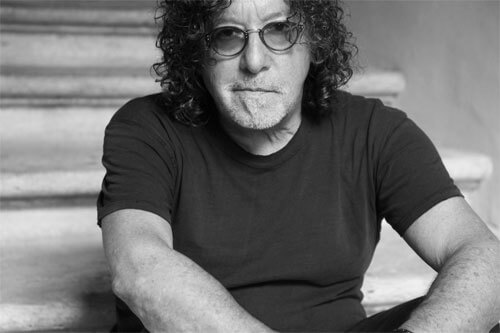Robert Farber’s style has influenced generations of photographers. His painterly, impressionistic style captures the essence of composition in every genre, including nudes, still life, landscapes and architecture. His ten photo art books have sold over half a million copies.
Jacqueline Kennedy Onassis brought Farber into Doubleday for the publication of his book “By The Sea,” which won the Art Director’s Award for color photography. Aside from numerous creative awards, Robert Farber also received the Photographer of the Year from PMA (Photographic Manufacturers Association), ASP International Award from the PPA (Professional Photographers of America) and The American Society of Photographers. This award was given to those who’ve made a significant contribution to the science and art of photography. Some previous recipients of this award include Dr. Edwin Land (inventor of the Polaroid), George Hurrell, and National Geographic.
Farber’s work with nudes in fine art as well as in the commercial realm is known and respected. He has lectured for Ogilvy & Mather on the “Nude in Advertising.” ASMP requested to use Farber’s nudes as an examples of the artistic application in support of the National Endowment of Arts, after its backing of the controversial Mapplethorpe/Serrano exhibit. His book, “Farber Nudes,” was also included the Jacqueline Kennedy Onassis estate collection.
Farber’s fine-art photographs have been published in virtually every form. Farber has exhibited in galleries and museums world-wide. He’s lectured at the Smithsonian Institute, The George Eastman House, as well as Universities and professional groups throughout the United States, Japan, Australia and Europe. Aside from his fine art photography, Robert Farber’s work encompasses major campaigns for fashion, beauty and advertising, as well as directing for TV and film. A documentary highlighting Farber’s life and career, is in development for PBS.
Source: www.farber.com
Robert Farber has become renown for his depictions of the female form, although his painterly, impressionistic photographic style captures the essence of composition in many genres. Farber’s unique compositions allow the viewer to see the subject from a different perspective and in his words, “to evoke a feeling of romance. That the viewer wants to be there, be a part of it, get lost in it, whether it is a still life or landscape.” A pioneer in many ways, Robert Farber has been a leading force in the world of photography, particularly in his treatment of the subject of the nude. His work has paved the way for the female form to be shown in fine art, publishing, and advertising in a way that he describes only as “respectfully.” Delighting the viewer with his natural approach and fully embracing the female form with a fine art approach, Farber began introducing nudes in his advertising work in the 1970s. He brings the romance depicted in his fine art photographs to his renowned commercial work that has been celebrated over for their captivatingly composed settings.
Robert Farber is a New York City native whose artistic career began with art shows in 1970 just after college. At the start of his career, his most moving memory was when he was forced to leave an art show since photography was not widely accepted as an art form at that time. Persisting with his passion, he was eventually discovered at an Upper East Side art show. Both a publishing company and an advertising agency approached him, allowing his fine art career and fashion photography career to take off simultaneously. Farber also brings his romantic style to landscapes through his Americana series. By forcing the viewer to look at the images in a different way the artist hopes to show the heart and soul of America; a perspective he also applies to his New York Series. He hopes that his unique take on composition and style allow the viewer to experience the excitement, nostalgia, the grit and the elegance of the city.
Aside from numerous other creative awards, Robert Farber has received the distinctive Photographer of the Year award from the Photographic Manufacturers Association. He has also received the ASP International Award from the Professional Photographers of America and The American Society of Photographers. Farber has lectured at the Smithsonian Institute, The George Eastman House, as well as universities and professional groups throughout the United States, Japan, Australia and Europe. Jackie Kennedy Onassis recruited Farber during her time working for the publisher Doubleday that resulted in the publication of his notable book By the Sea which would be the first of many others. Recently, Canon presented Farber's work in a solo exhibition at Art Miami in 2013, while a documentary highlighting the artist is currently in development for PBS and will air in September of 2014 chronicling this artist’s amazingly elegant work over the past four decades.
Source: Holden Luntz Gallery
